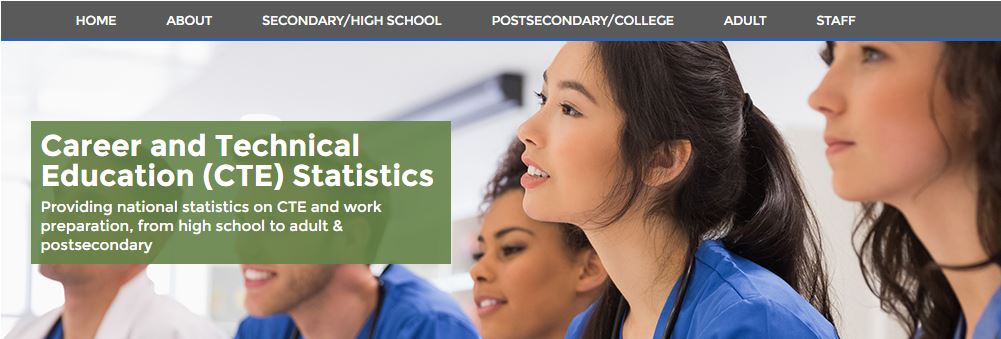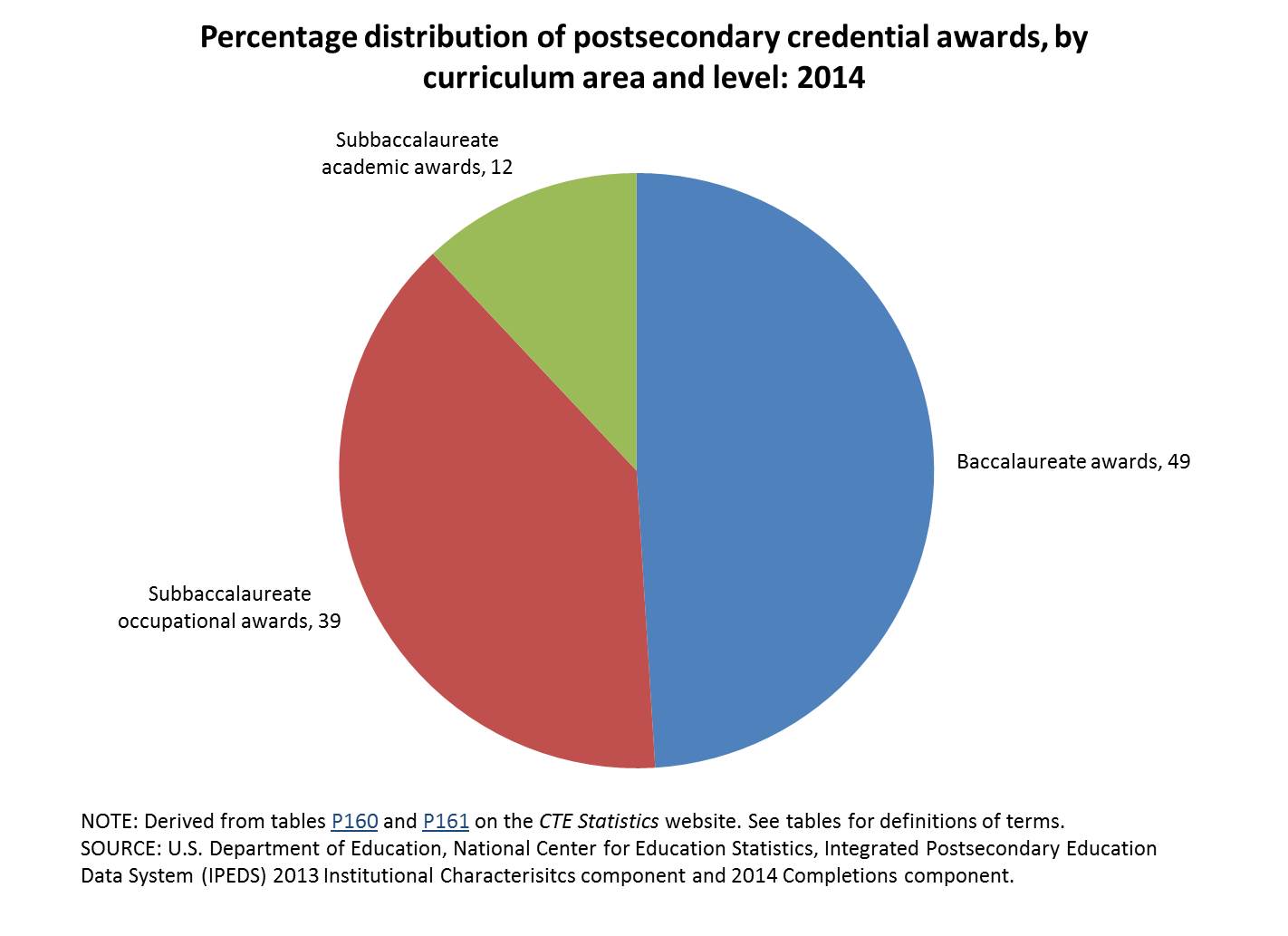By Lisa Hudson, National Center for Education Statistics
Happy National CTE Month! This month celebrates career and technical education (CTE), which is a significant component of the American educational system.

Overall, 13 percent of the credits that public high school graduates earn are in CTE. Almost all public high school graduates (94 percent) earn at least some credits in CTE, with 36 percent of graduates earning at least 3 credits in CTE occupational fields, such as agriculture, business, and consumer services. At the postsecondary level, where CTE is defined as subbaccalaureate occupational education, 39 percent of all credential awards are in CTE (see chart below).
These statistics are drawn from the CTE Statistics program at the National Center for Education Statistics (NCES), which provides national-level information on CTE at the secondary and postsecondary education levels, as well as information on occupational certification and licensure. This information is designed to help the U.S. Department of Education and Congress evaluate the status of CTE as part of its deliberations on federal CTE legislation (currently, the 2006 Carl D. Perkins Act). This information also supports state and local CTE administrators and researchers in their efforts to develop, evaluate, and encourage effective CTE policies and programs.
Statistics, reports and summarized findings about CTE are available on the newly redesigned CTE Statistics website (see screenshot above). Here, you can find information organized into three categories—secondary education, postsecondary education, adults in general—and sorted by topic, including CTE delivery system and offerings; student participation; and student persistence, attainment, and labor market outcomes. NCES updates the website as new data become available and new reports are produced. In the next two years, we plan to add updated information on participation in CTE by both high school and postsecondary students, as well as data on the foundational skills of adults and their participation in work-experience programs.

Collecting CTE Statistics
Statistics on CTE come from federally sponsored national data collections, primarily NCES data collected from schools, teachers, students, and individuals in households. These data collections are not specifically focused on CTE. Rather, they are general purpose education or demographic surveys from which information on CTE is extracted. The CTE Statistics website includes a list of these data sources, with links to each data source’s website, where information is provided on how to access the data.
Since CTE is embedded in the larger framework of education, it makes sense that the data collection system for CTE should, itself, be embedded in general education surveys. Using this structure we can learn more about CTE in relation to general education programs. For instance, we can compare postsecondary students who major in CTE fields with those who major in academic fields (CTE students tend to be older) and determine the proportion of the typical high school students’ curriculum that is devoted to CTE (13 percent, as noted above). We can also evaluate how high school students’ participation in CTE relates to their participation in other subject areas, their academic achievement, and their experiences after high school (it’s complicated).
Stay Informed
Visit the CTE Statistics website often to see what’s new. You can also sign up for automatic email updates using The IES newsflash (Under National Center for Education Statistics, select “Adult and career information.”) If you have thoughts, questions, or ideas, send us an email.